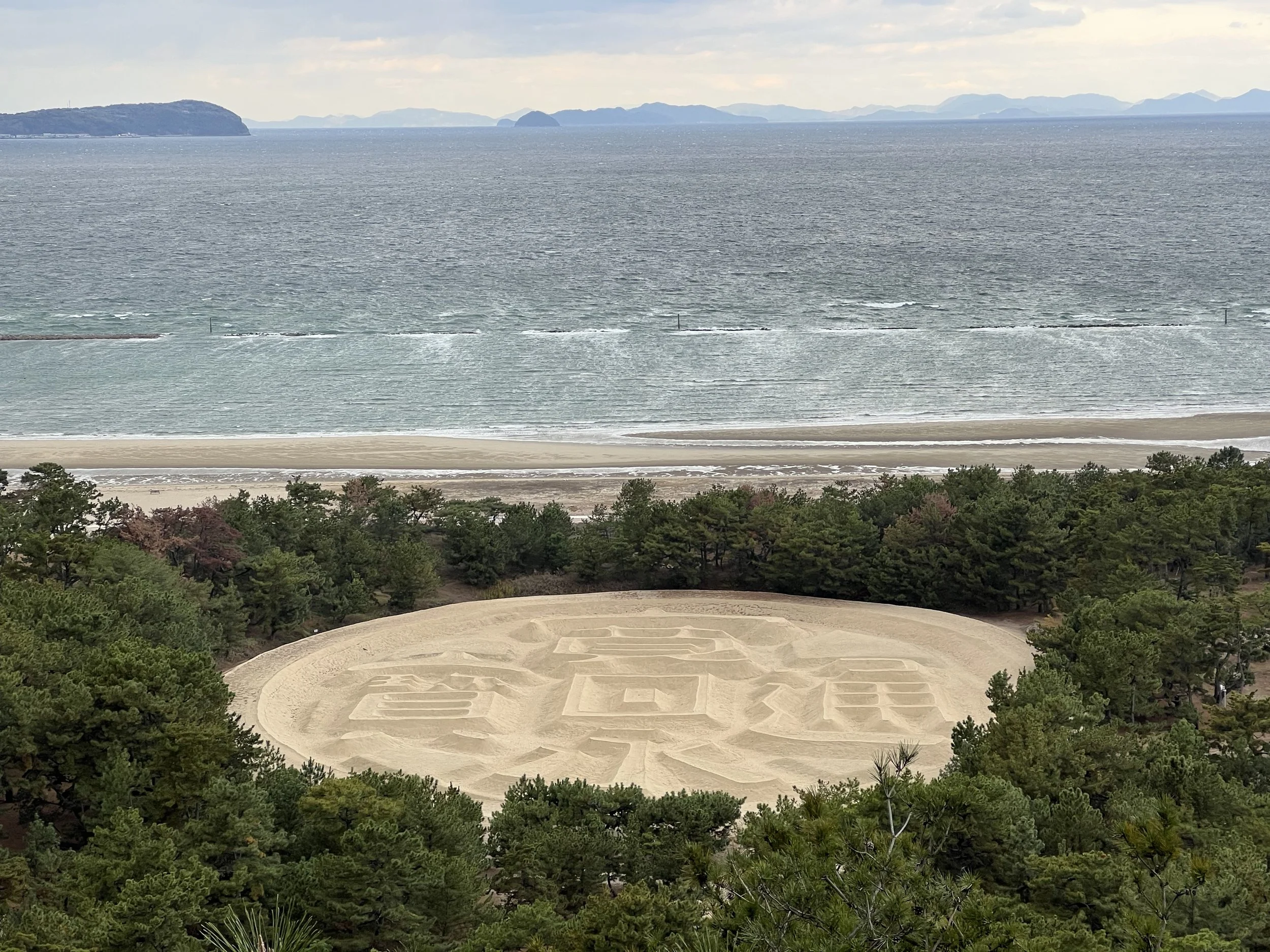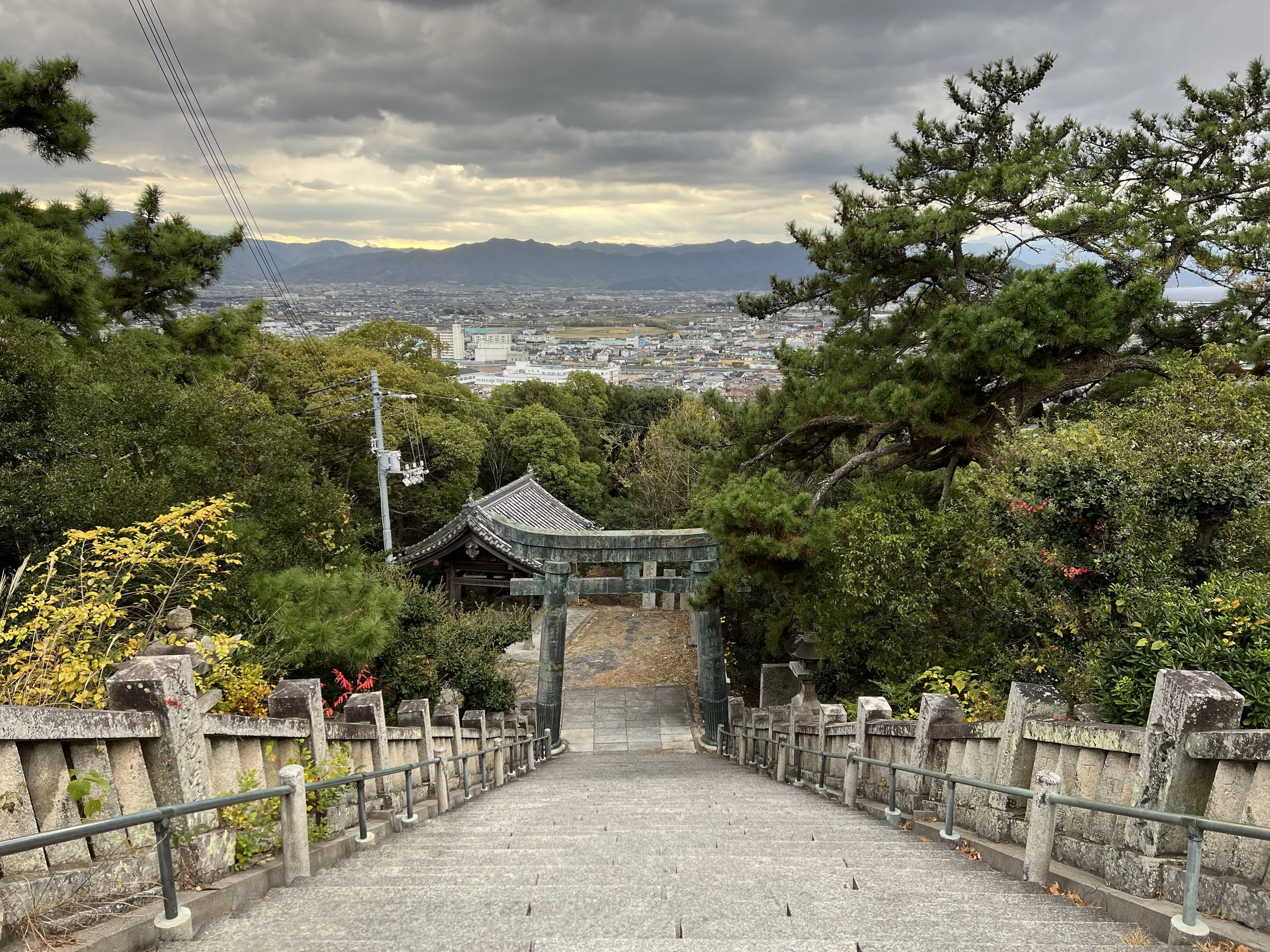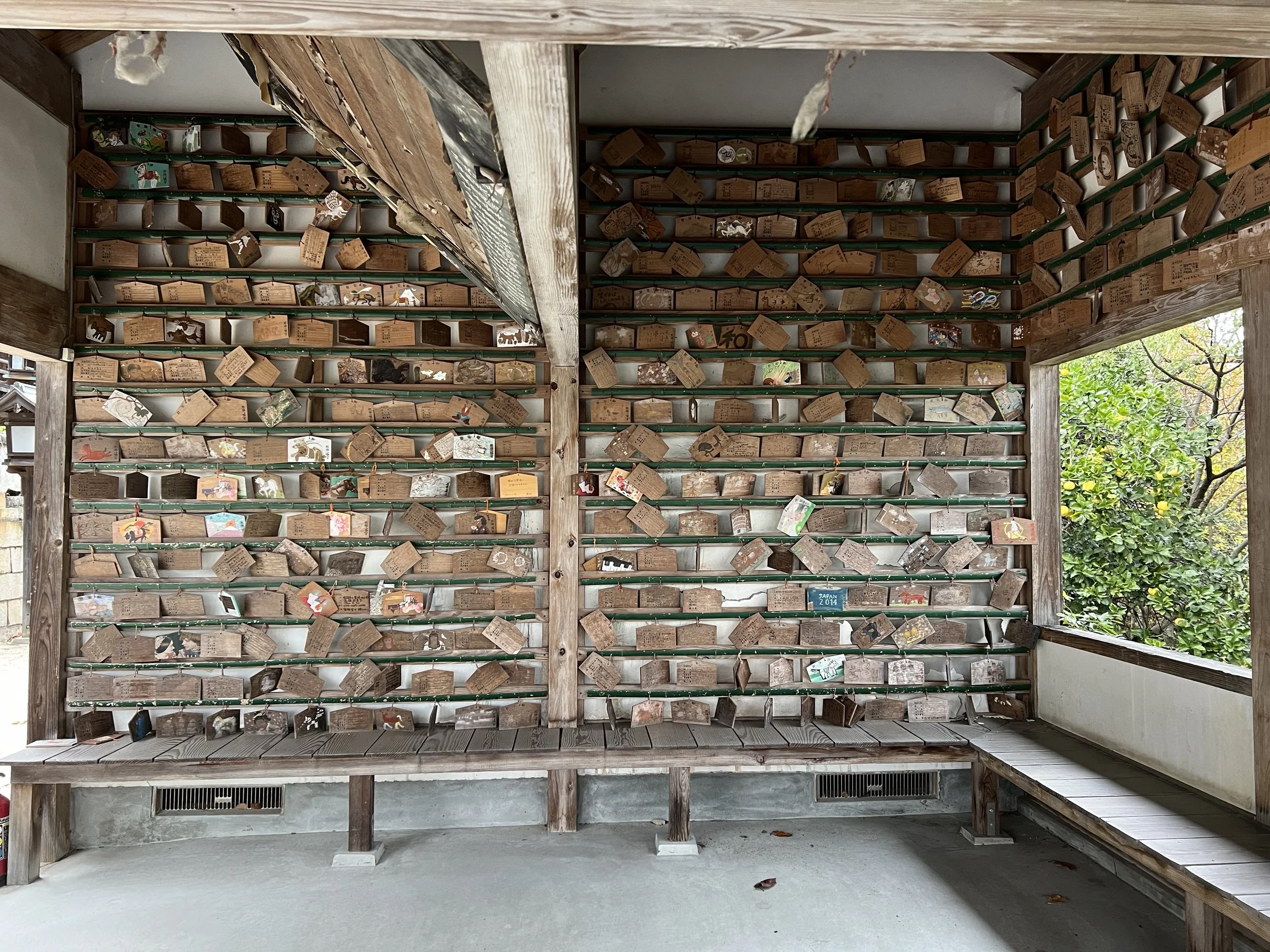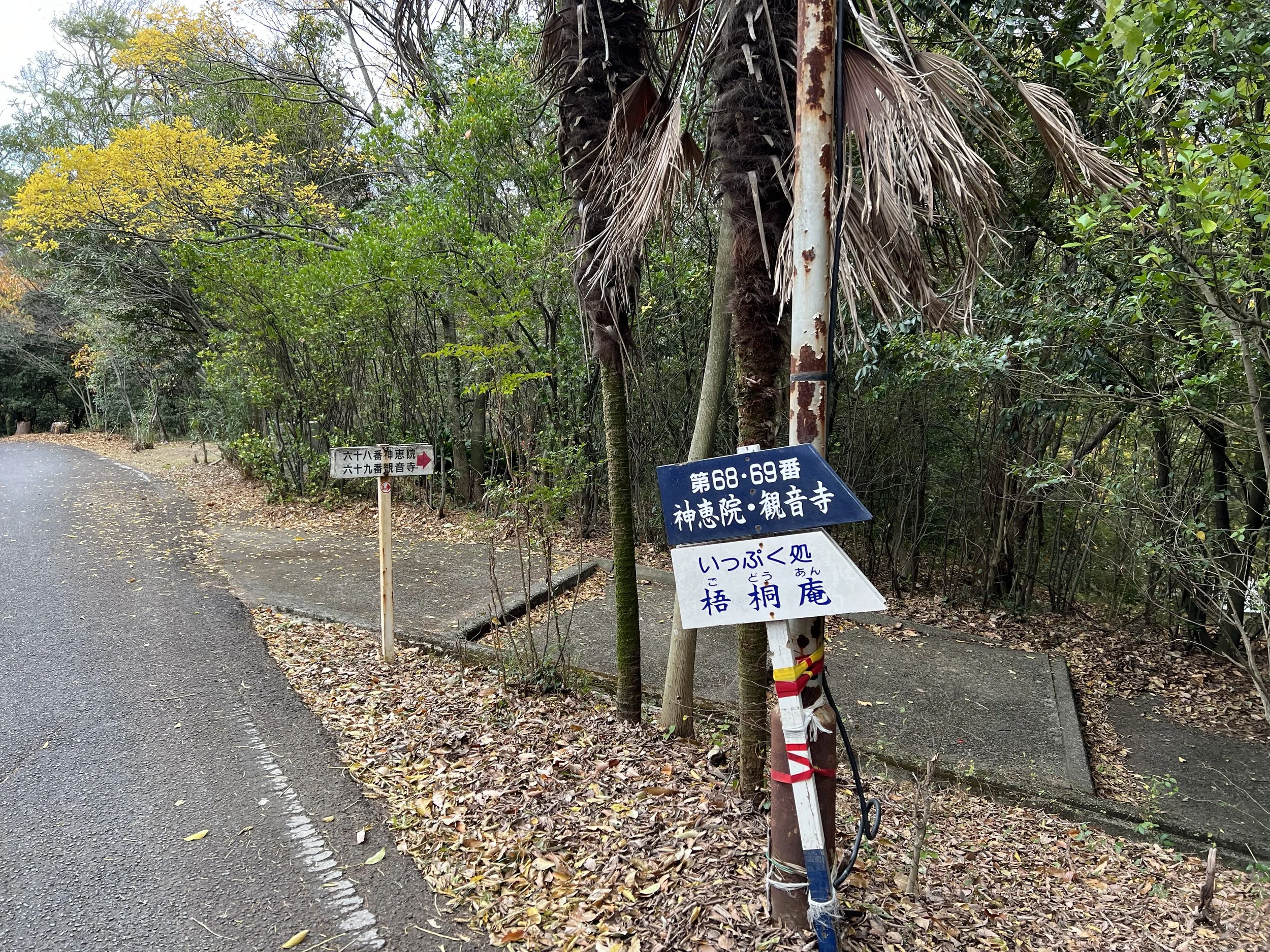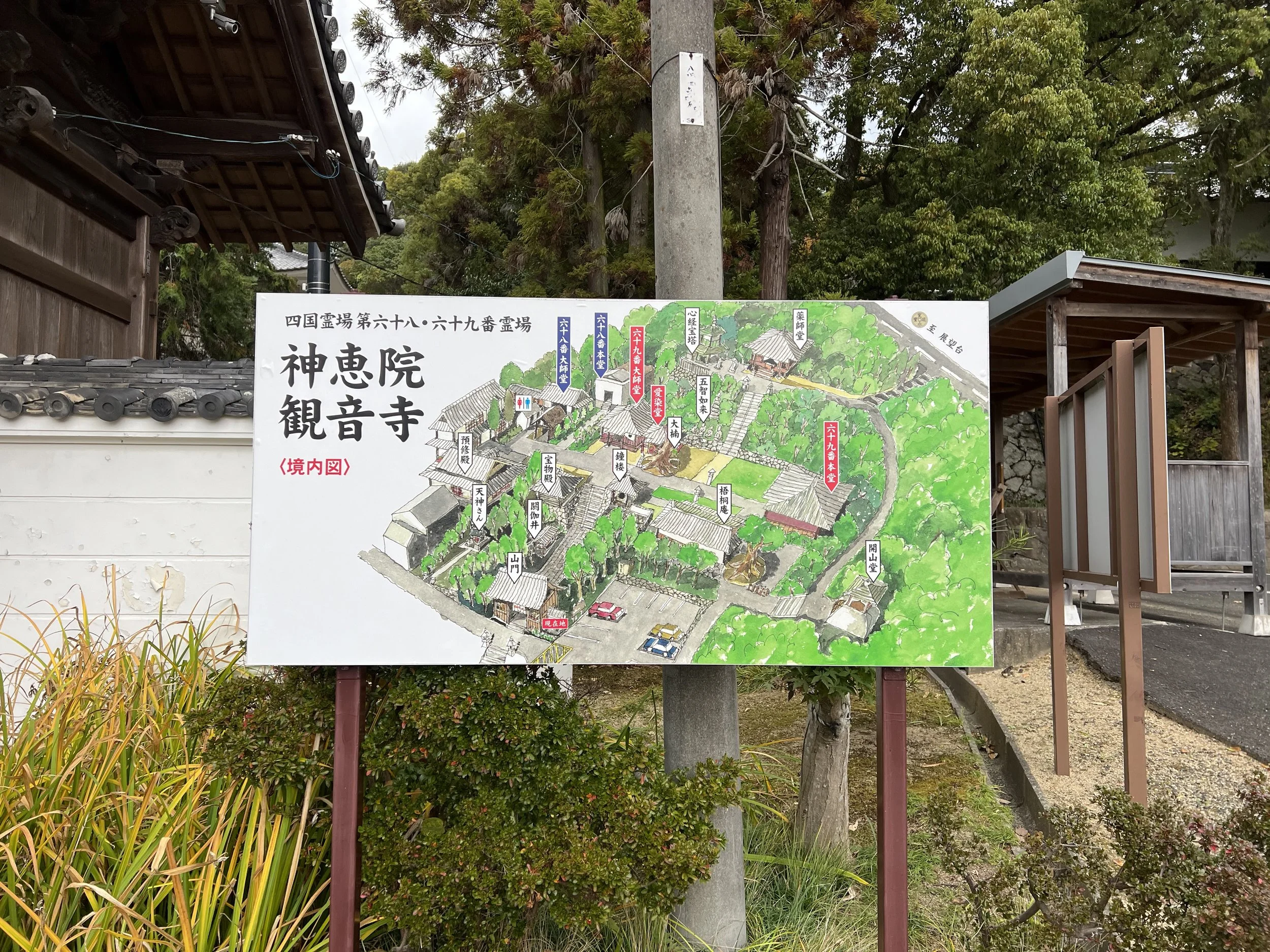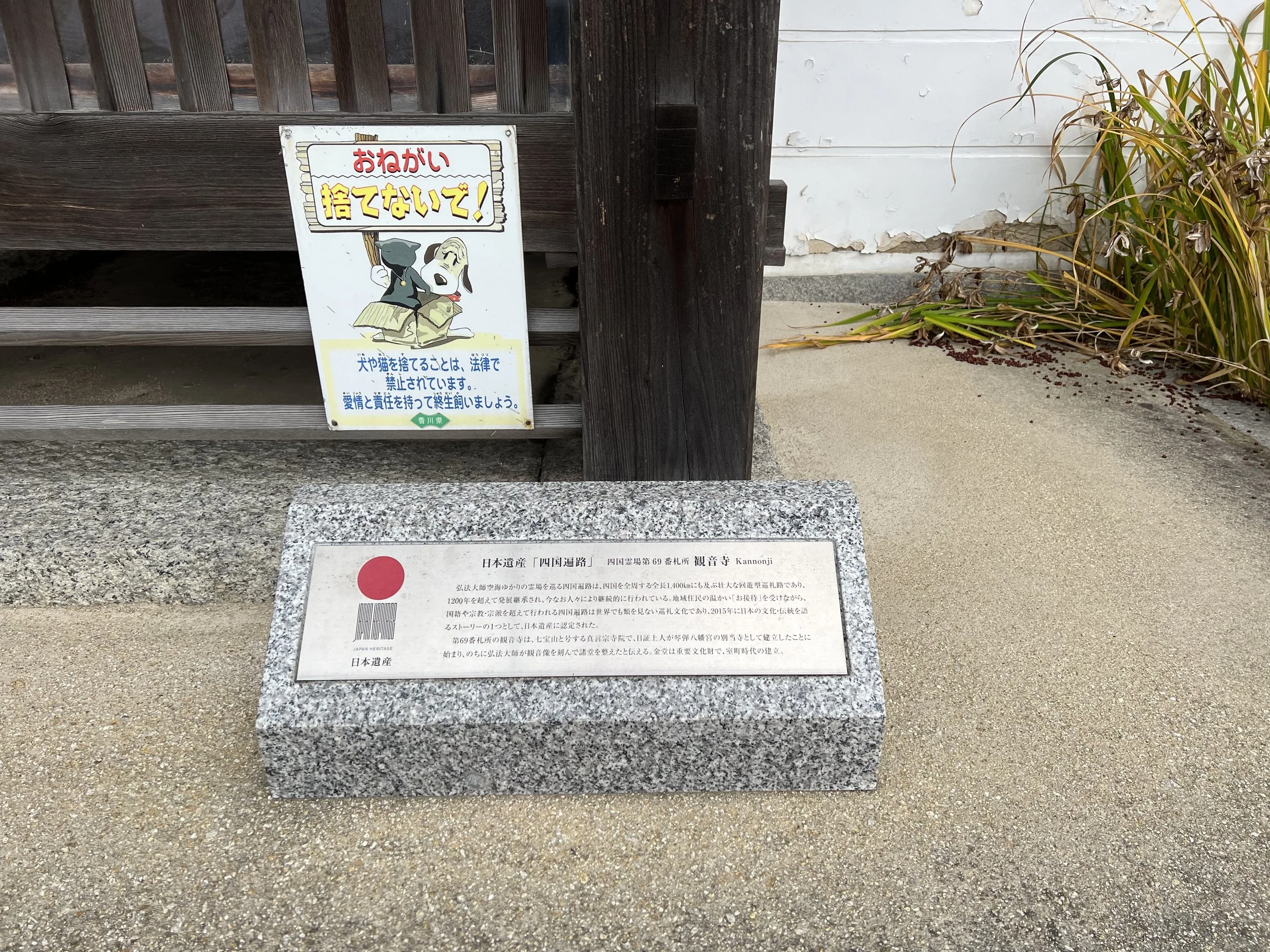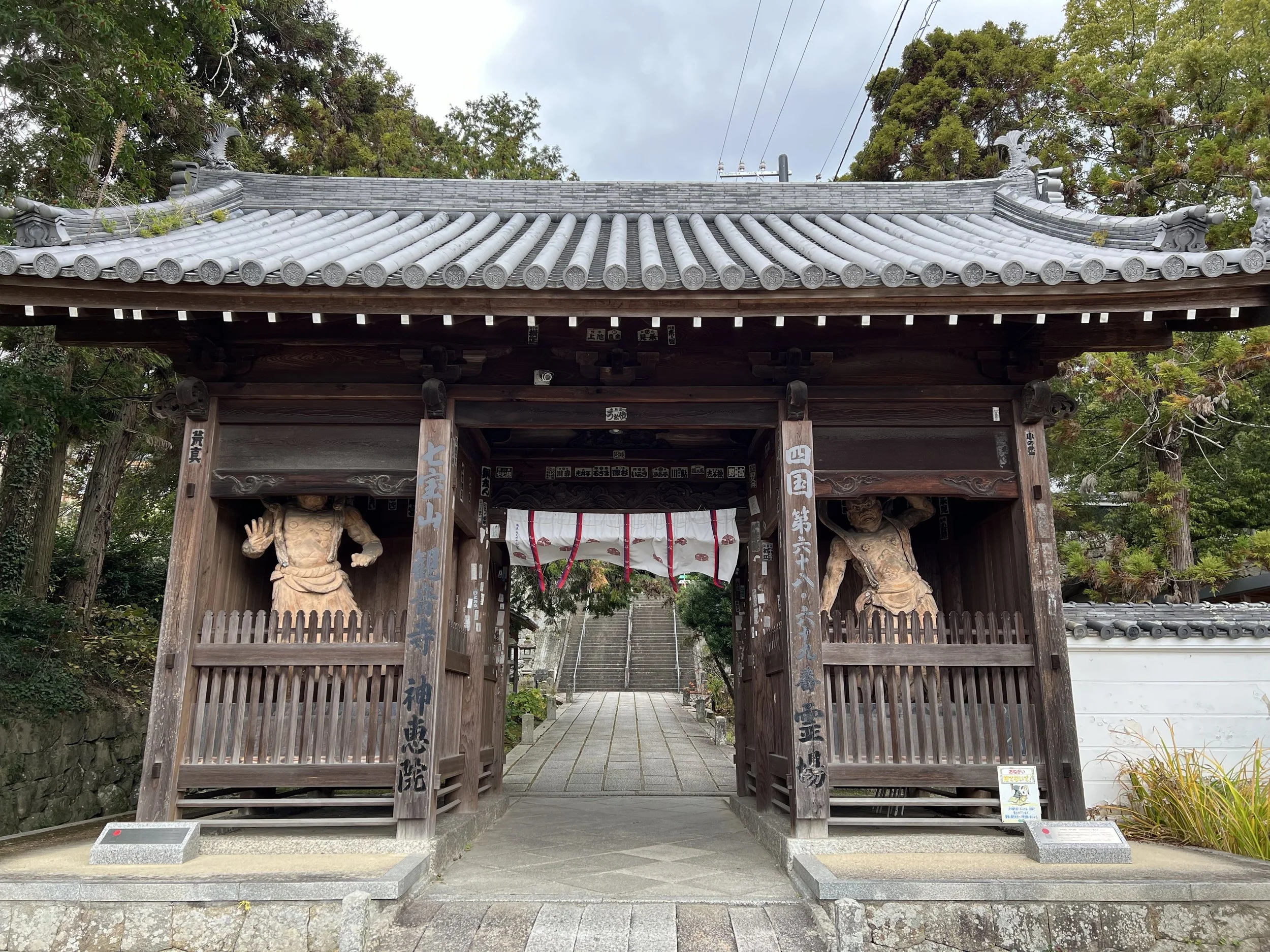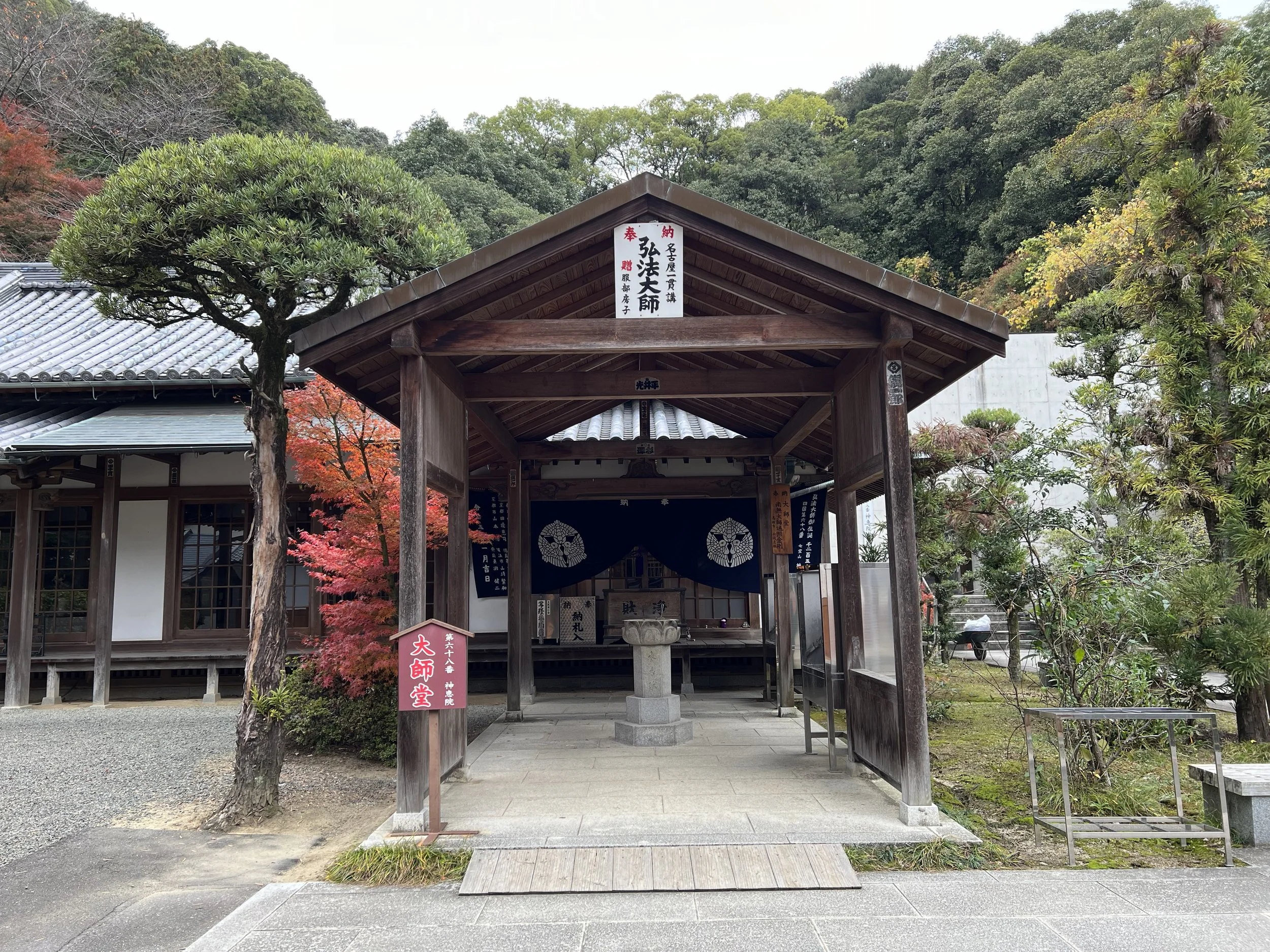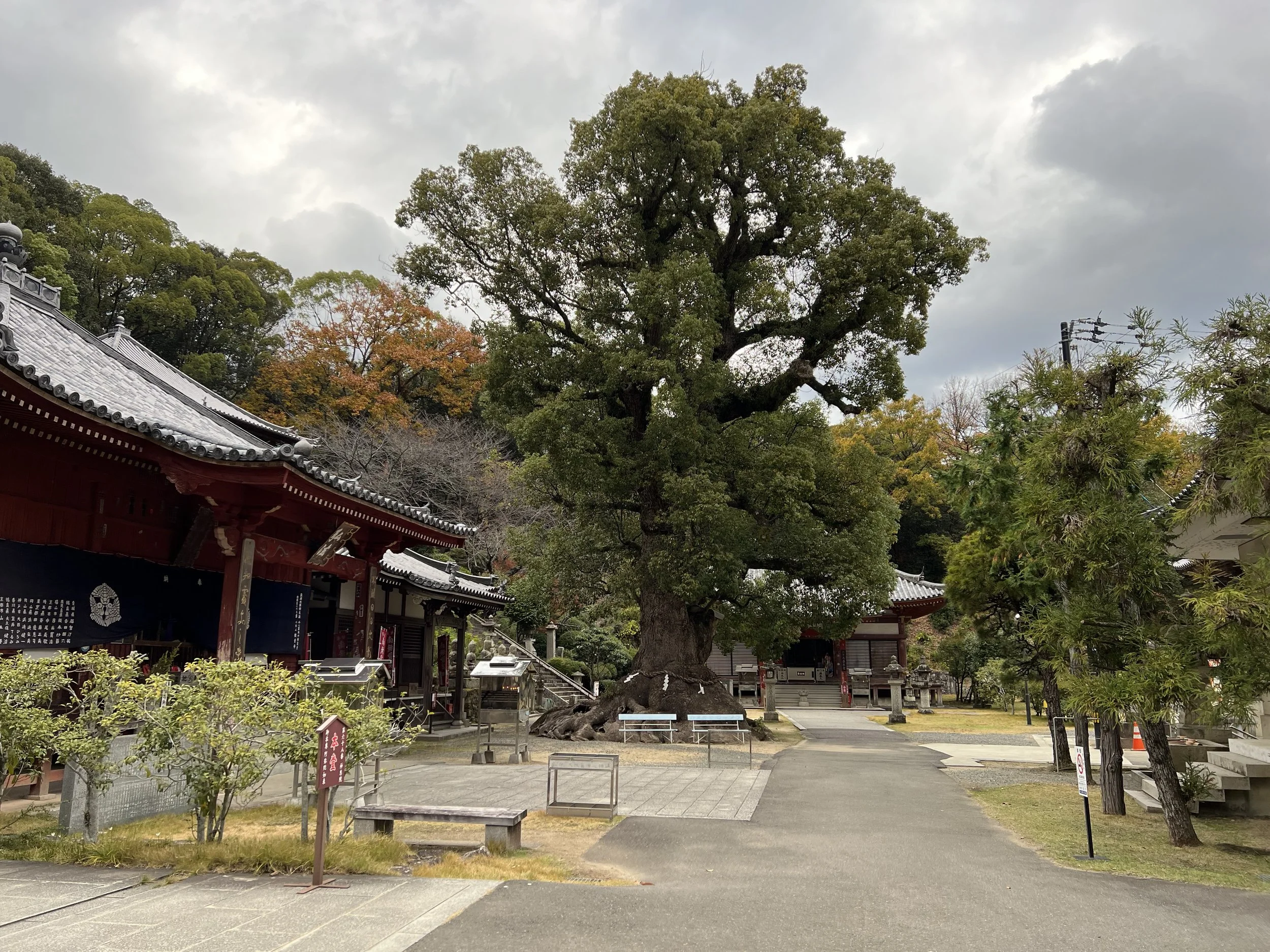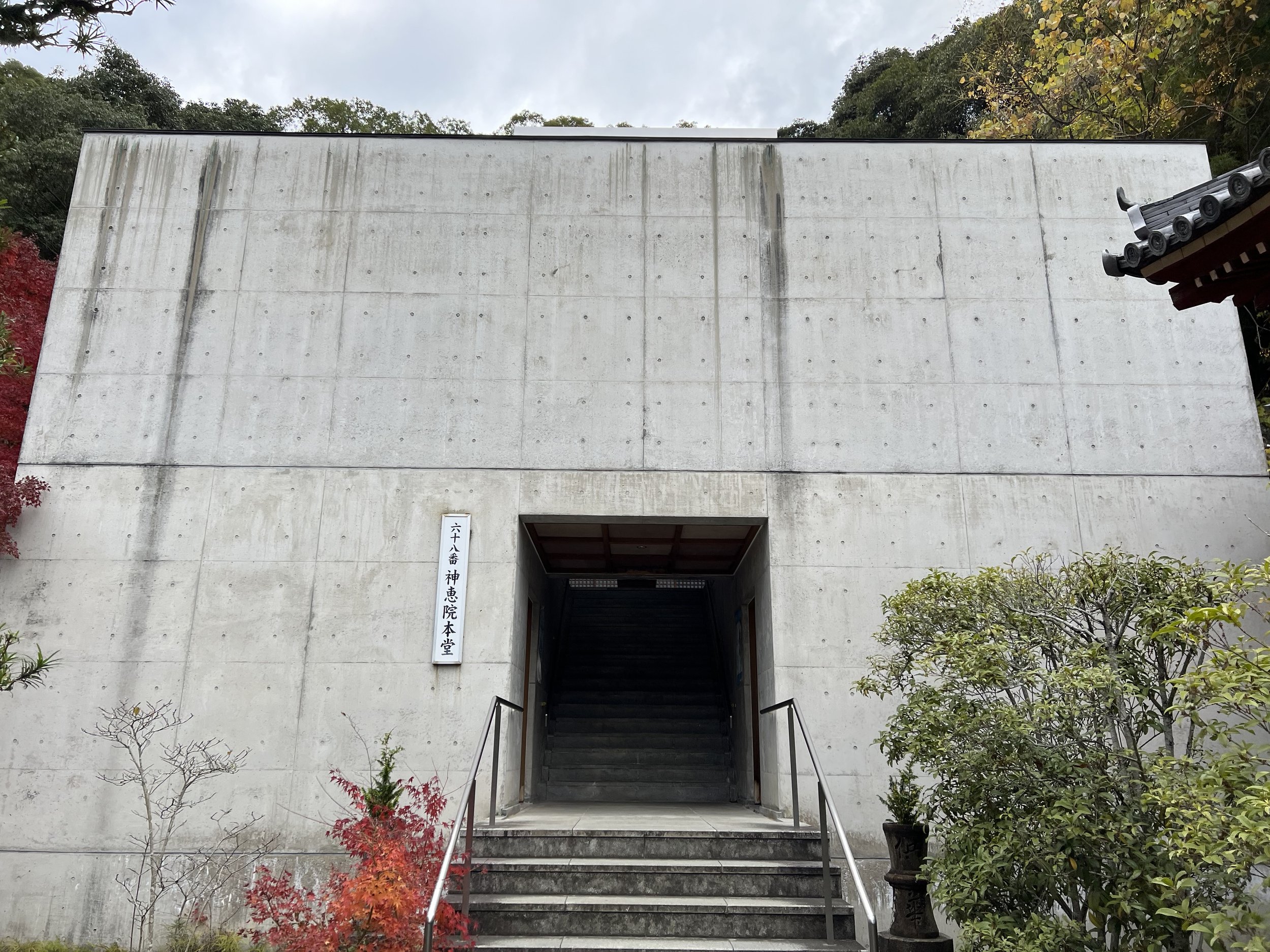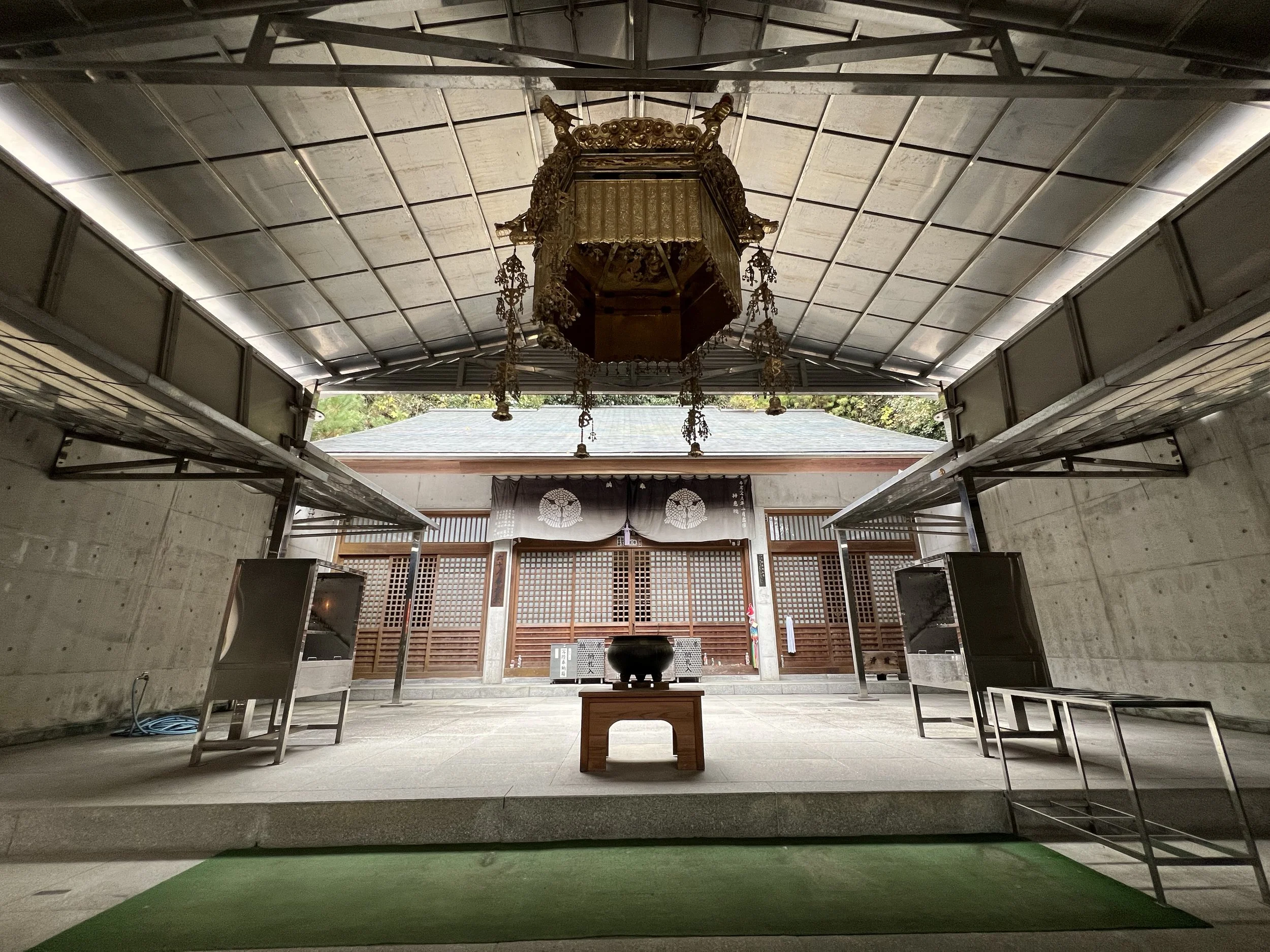Shikoku Henro - Jinnein Temple & Kannon Temple - Kagawa, Japan
I planned two full days in Kan’onji to explore this coastal area of Kagawa Prefecture, and one of the main spots I wanted to visit was the Zenigata Sunae—a massive sand sculpture shaped like an Edo-period coin. According to legend, if you see the Zenigata Sunae, you’ll live a long and healthy life and never struggle with money. The sand sculpture itself is off-limits to visitors, but you can view it clearly from the observatory platform in Kotohiki Park, which offers a stunning vantage point over the entire design.
From Kan’onji Station, I decided to walk rather than take a bus. It’s about a 20-minute walk to the summit where the observation deck is located. The trail is short but a little steep in sections, lined with pines and coastal views of the Seto Inland Sea. From the top, the view was spectacular—the perfectly formed sand coin lay below, framed by the coastline and trees. There are informative displays about the history of the sand art and a sign noting the illumination schedule, which runs from sunset until 10 PM. I can imagine how magical it must look at night, glowing softly against the ocean backdrop.
From the Zenigata Sunae Observatory, I made my way to the nearby Kotohiki Hachiman Shrine, one of the oldest shrines in the region. After exploring the shrine grounds, I continued on foot toward Jinnein Temple (Temple 68) and Kannonji Temple (Temple 69), both part of the Shikoku Henro pilgrimage. The two temples are right beside each other and even share the same entrance gate, which can make it a little confusing at first glance.
The temple complex felt quiet and understated. While Kannonji Temple had the traditional structures I’ve come to expect along the Henro route, Jinnein Temple stood out immediately. Its exterior looked almost modern—a concrete façade that resembled a simple rectangular box. I was skeptical as I climbed the steps, but once inside, I was surprised to find a more traditional temple hidden behind it, preserving its sacred interior while adapting to modern architecture.
As I explored the grounds, I couldn’t help but wonder why these two temples were side by side. Later, I learned that their unusual proximity stems from Japan’s Meiji-era policy of separating Shinto and Buddhism (Shinbutsu Bunri). Historically, Kannonji Temple and Jinnein Temple were part of a single complex associated with Kotohiki Hachiman Shrine, founded in 703. When the government enforced the separation, the Buddhist and Shinto structures were required to split—but rather than relocate entirely, Jinnein was formally distinguished as a separate temple yet remained within the same grounds.
That bit of history suddenly made sense of what I had seen: three spiritual sites—Kotohiki Hachiman Shrine, Jinnein Temple, and Kannonji Temple—all closely intertwined, both physically and historically. It was a fascinating reminder of how Japan’s religious and cultural heritage evolved together, sometimes in harmony and sometimes under tension.
After paying my respects at both temples, I took a final look back toward the ocean before heading down toward the station. It had been a peaceful and enlightening visit, rich with history and symbolism.
History & Background
Jinnein Temple and Kannonji Temple are among the most unique pairings on the Shikoku 88 Temple Pilgrimage. Originally part of a single religious site established in 703 as a branch of Kotohiki Hachiman Shrine, both temples reflect the historical blending of Shinto and Buddhist practices that defined early Japanese spirituality.
During the Meiji Restoration, when the government enforced the separation of Shinto and Buddhism, Jinnein was reclassified as an independent Buddhist temple but remained within the same precinct as Kannonji. Today, they share a single entrance and appear as one connected complex, making them a memorable stop for pilgrims and visitors alike.
The nearby Zenigata Sunae (銭形砂絵) in Kotohiki Park is another notable landmark. Created during the Edo Period, this giant sand coin measures approximately 122 metres east to west and 90 metres north to south. Locals believe that anyone who sees it will enjoy longevity and good fortune—making it a fitting companion to a pilgrimage visit.
#68 Jinnein Temple 神恵院 – Believed to have been founded by Gyoki and later restored by Kobo Daishi (Kukai), Jinnein uniquely shares its grounds with the neighbouring Kannonji (Temple 69). It enshrines the deity of divine blessings and protection for seafarers.
#69 Kannonji Temple 観音寺 – Established by the monk Gyoki and rebuilt by Kobo Daishi, Kannonji is dedicated to the Goddess of Mercy, Kannon. The temple is renowned for its proximity to the giant sand coin Zenigata Sunae, symbolizing good fortune and prosperity.
To see my progress on the full Shikoku Henro Pilgrimage, visit my Shikoku Henro - Temple List & Progress..
Getting There
From Kan’onji Station on the Yosan Line, it’s about a 20-minute walk to Kotohiki Park and the Zenigata Sunae Observatory Platform. From there, Kotohiki Hachiman Shrine, Jinnein Temple, and Kannonji Temple are just a short walk downhill.
Alternatively, local taxis or rental bicycles are available from the station, but walking is a pleasant way to take in the coastal scenery and atmosphere of Kan’onji.
Route Overview
Distance: 7.02 km (Kanonji Station)
Total elevation gain: 125 m
Duration: 1 hr 18 min (with breaks 1 hr 28 min)
Difficulty: Easy
Peak: Zenigata Observatory Platform 銭形展望台 68m
Cost Breakdown
Vending Machine: ¥240

